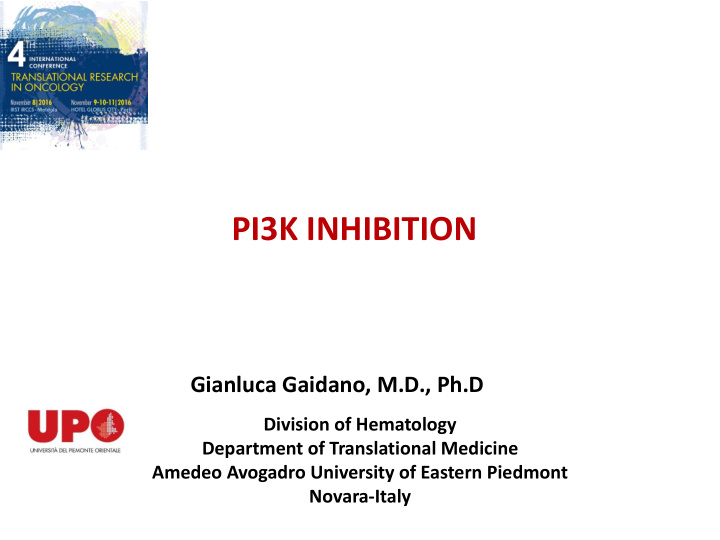



PI3K INHIBITION Gianluca Gaidano, M.D., Ph.D Division of Hematology Department of Translational Medicine Amedeo Avogadro University of Eastern Piedmont Novara-Italy
Disclosures Roche (Advisory Board) Janssen (Advisory Board) Amgen (Advisory board, research support) Gilead (Speakers’ bureau) Novartis (Advisory Board) Morphosys (Advisory Board) Abbvie (Advisory Board) Karyopharm (Advisory Board)
Outline • Rationale for the need to circumvent genotoxic refractoriness • The B cell receptor in B cell malignancies • Therapeutic targets of the B cell receptor cascade: PI3K
Molecularly deregulated cellular programs in indolent B-cell malignancies NOTCH NF-kB TLR BIRC3 MYD88 NOTCH1 NFKBIE FBXW7 SPEN Cell CDKN2A DNA damage response cycle MYC P TP53 mIR15/16 TP53 ATM P P TP53 BCL2 SF3B1 POT1 Apoptosis Puente, Nature 2015
Pathogenesis of CLL Microenvironment Secondary Trasforming Interactions Lesion Lesion Progression Predisposition Initiation Promotion/Accumulation Chemorefractoriness Transformation Polygenic del13q Signaling pathways TP53 IRF4 +12 BCR NOTCH1 IRF8 NF-kB SF3B1 MYC TLR BIRC3 Other CD38 ATM VLA-4 integrins MYC NOTCH CDKN2A CXCR4
CLL mutations disclosed by NGS studies Font size according to gene mutation prevalence • One of the tumor with the lowest background mutation load (0.6 per Mb) • No unifying gene mutations • TP53 , NOTCH1 , SF3B1 , ATM mutated in >5% CLL Fabbri, J Exp Med 2011; Puente, Nature 2011; Rossi, Blood 2011; Quesada, Nat Genet 2011; Wang, N Engl J Med 2011; Rossi, Blood 2012, Puente, Nature 2015
Recommend
More recommend